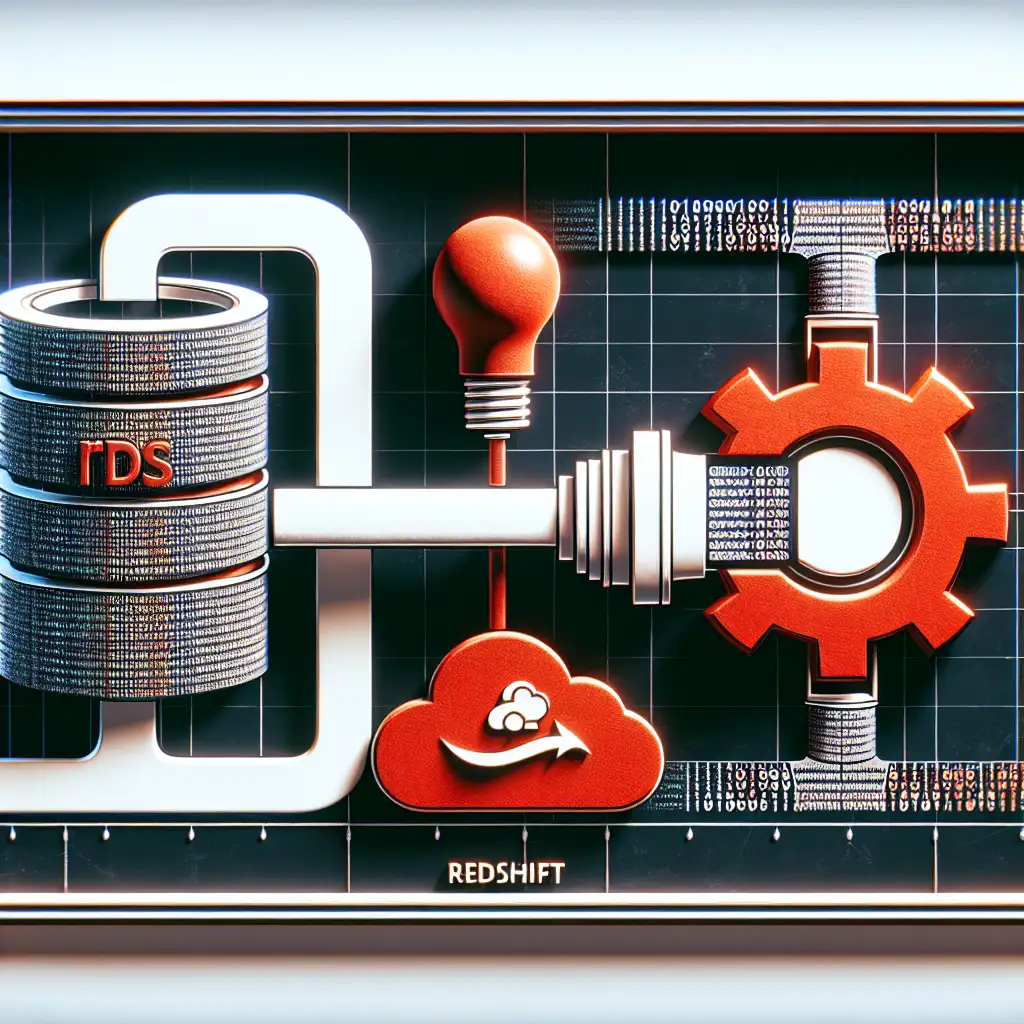Streamlining Data Migration from AWS RDS to Redshift for Scalable Analytics
Two systems: AWS RDS for OLTP workloads, Amazon Redshift for OLAP. Eventually, every data-driven platform faces the same hurdle—feeding operational data into a scalable analytics warehouse with minimal downtime and zero tolerance for data loss.
RDS to Redshift: Motivation
- OLTP ≠ OLAP: RDS (PostgreSQL 14.x, MySQL 8.x) handles transactional integrity and concurrency. Redshift (RA3 node types, 2023.1+) is architected around parallel columnar storage, distribution keys, and analytical workloads.
- Scaling Analytics: Redshift clusters process petabyte-scale datasets without stalling operational traffic.
- Cost & Performance: Attempting large-scale analytics in RDS? Expect higher latency, noisy neighbors, and ballooning costs. Redshift computes at a lower price per query.
- Data Lifecycle: Keep source-of-truth in RDS, aggregate and historize in Redshift for BI/reporting.
Rethink: Migration Is Not Just Copy
The process involves:
- Schema mapping (usually some denormalization—3NF in RDS, often 1NF in Redshift).
- Downstream transformation logic (ETL or ELT—Redshift prefers the latter for scale).
- Managing cutover impacts, incremental changes, and validation.
Missed one? Plan on hunting bugs in impossible-to-debug JOINs later.
0. Typical Pitfalls (Skip, and Regret Later)
- Naive dump/load without considering schema drifting: expect broken ETL and mysterious NULLs.
- Uncompressed CSVs over S3: unnecessary cost and time.
- Not tracking incremental change: missed late-arriving transactions, reconciliation hell.
1. Inventory: Data Mapping & Transform Plan
- Schema Diff: Use
pg_dump --schema-onlyor MySQL Workbench, then diff against Redshift's requirements (e.g.,TIMESTAMP WITH TIME ZONEnot supported—convert toTIMESTAMP). - Identify Fact vs. Dimension Tables: Redshift schema design is not transactional; denormalize and prejoin where possible.
- Change Frequency: Will you need near real-time sync (e.g., SCD Type 1/2), or is nightly batch sufficient?
2. Extraction: Methods
- Native Tools:
- PostgreSQL:
COPY (SELECT ...) TO STDOUT WITH CSV HEADER - MySQL:
SELECT INTO OUTFILE
- PostgreSQL:
- AWS DMS: Handles initial loads and CDC. Note: Don't trust “Full Load Complete” message without verification.
- Custom Python/Go: Use
psycopg2,mysql-connector, chunk query results, write to GZIP'd CSV or Parquet.
Sample: Split dump if extracting >50GB; single files cause S3 copy bottlenecks.
3. Land Data: Amazon S3 as Staging
Always stage via S3. Never load direct from your laptop or EC2 ephemeral.
aws s3 cp ./orders_20240609.csv.gz s3://company-warehouse-staging/orders/ --storage-class STANDARD_IA
Tip: Use STANDARD_IA (Infrequent Access) for intermediate data—saves cost, same performance.
4. Bulk Load: COPY Command Nuances
Redshift’s COPY dominates for ingestion. Key parameters:
COPY orders
FROM 's3://company-warehouse-staging/orders/orders_20240609.csv.gz'
IAM_ROLE 'arn:aws:iam::123456789012:role/RedshiftLoadRole'
FORMAT AS CSV
GZIP
TIMEFORMAT 'auto'
IGNOREHEADER 1
STATUPDATE ON
;
- Redshift parses GZIP natively; don’t decompress beforehand.
- Permissions: check CloudTrail if
AccessDeniedException—role trust issues are common, especially with cross-account S3 buckets.
5. Manage Incremental Sync
- DMS for CDC: Set up DMS task with Kinesis or S3 as target. Expect minor lag (seconds to a few minutes).
- Gotcha: DMS transforms sometimes drop columns not present in full load mapping.
- Glue or Lambda for Orchestration: For small volumes or scheduled jobs, combine S3 events to trigger downstream COPYs.
- Alternative: Use logical replication (Postgres) to Kafka, but beware: production overhead and troubleshooting offset lag.
6. Post-Load: Optimize & Validate
-
Data Validation: Always compare row counts and checksums between source and destination. Example:
SELECT COUNT(*), MAX(order_date) FROM public.orders; -
Table Maintenance: Use
VACUUMandANALYZEafter each bulk operation:VACUUM FULL orders; ANALYZE orders;Note: Vacuum timing depends on Redshift node type—RA3 nodes handle small tables in seconds, large ones (1B+ rows) could take 20+ minutes.
-
Distribution & Sort Keys: Analyze query patterns; set DISTKEYs for large join columns. Over-normalization crushes columnar performance.
Real-World Case: Customer Orders Ingestion
Suppose you’re handling orders from an RDS PostgreSQL instance (orders table, ~30M rows, 5GB, daily delta ~200K):
-
Export Table:
\copy (SELECT * FROM orders WHERE order_date::date > CURRENT_DATE - INTERVAL '1 day') TO 'orders_20240609.csv' CSV HEADEROr, for all time:
pg_dump --table=orders --data-only --column-inserts --file=orders.sql mydb -
Compress & Upload:
gzip orders_20240609.csv aws s3 cp orders_20240609.csv.gz s3://company-warehouse-staging/orders/ -
Redshift Table Creation: Match datatypes, flatten where appropriate.
CREATE TABLE warehouse.orders ( order_id INT, customer_id INT, product_id INT, order_date TIMESTAMP, quantity INT, total_price DECIMAL(14,2) ) DISTKEY (customer_id) SORTKEY (order_date); -
COPY Data:
COPY warehouse.orders FROM 's3://company-warehouse-staging/orders/orders_20240609.csv.gz' IAM_ROLE 'arn:aws:iam::123456789012:role/RedshiftLoadRole' CSV GZIP IGNOREHEADER 1; -
Reconcile & Tune:
- Row counts, spot checks (
SELECT *on sample PKs) VACUUMandANALYZE- Query sample: check distribution skew
SELECT customer_id, COUNT(*) FROM warehouse.orders GROUP BY customer_id ORDER BY COUNT(*) DESC LIMIT 10; - Row counts, spot checks (
Additional Lessons Learned
- Compression: Parquet with Snappy improves both ingestion speed and downstream analytics. Only use if Spark/Glue ETL is in place.
- Error Handling: Watch for “Invalid data found, skipping file” in Redshift logs—often mismatched datatypes or delimiter issues.
- Security: Use SSE-S3 or SSE-KMS for S3 staging. Enforce SSL connections from both client and Redshift to S3.
- Monitoring: CloudWatch on DMS tasks is critical—set alarms for sync lag and error thresholds. Occasional DMS task restarts are necessary (memory leaks, stuck CDC).
- Alternative Tools: For very high frequency or complex pipelines, consider Debezium/Kafka, but operational complexity increases sharply.
Summary:
Efficient migration between AWS RDS and Redshift is less about “moving data” and more about building robust, repeatable pipelines that handle schema drift, scale, incremental updates, and validation. Expect imperfections: some transformation rules will always require tuning. Test with small batches, automate end-to-end, and never trust a migration until business reports match.
Questions about specific data types, migration edge cases, or operational bottlenecks? Ping your engineering channels. There’s always a new quirk to solve next quarter.
